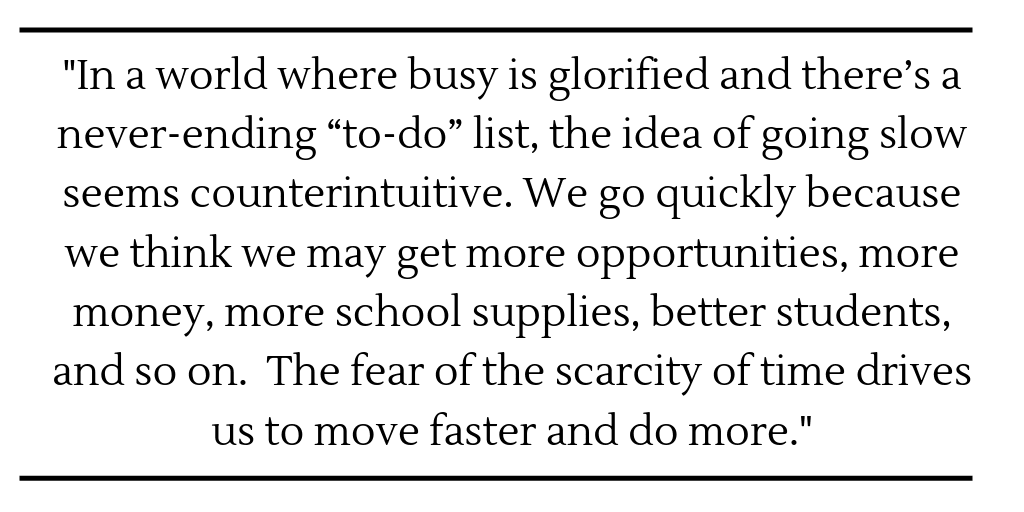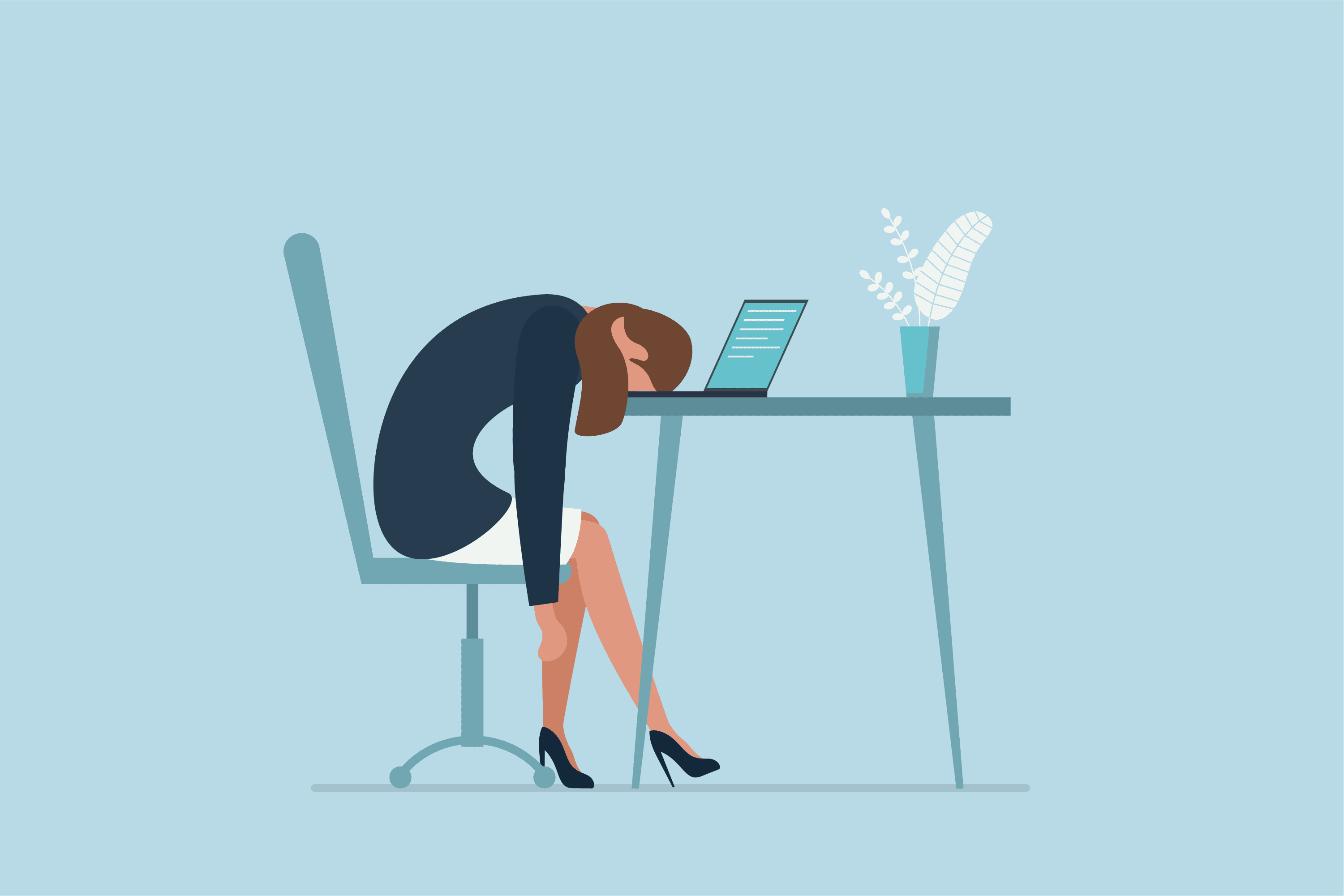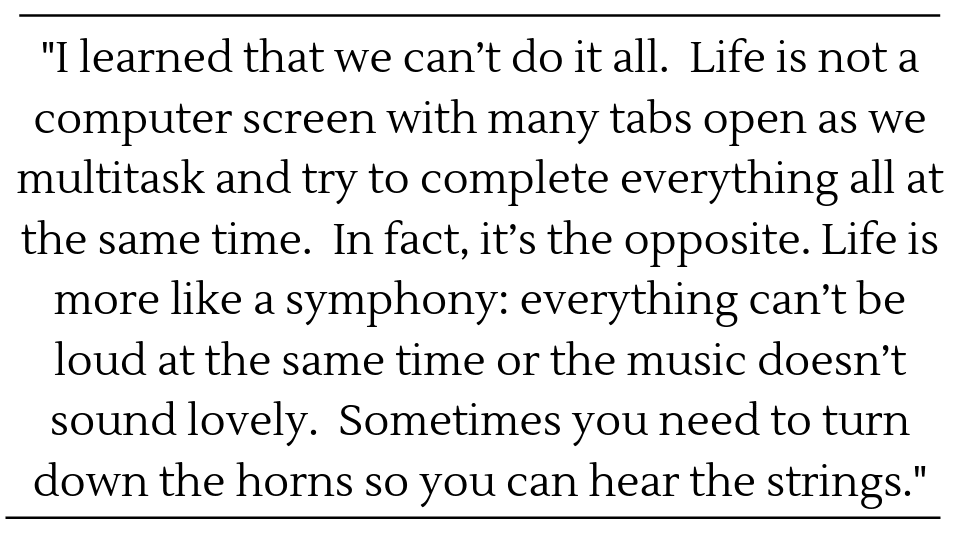My Back-to-School Educator Resiliency Story
This school year, go slow, stay present, and trust.
Now that September is here, educators are back to school. We can quickly forget that we’ve had two months to recharge as we fall back into the daily school routine as summertime slips out the door and we re-enter into our classrooms.
It’s amazing how swiftly everything piles upon us as educators. There are big ideas and new curriculums to understand, new assessment strategies, new ways of learning and teaching with an Indigenous lens, new social-emotional language to support our ever-changing and ever-challenging student body, and always new pedagogy that can be implemented. Not to mention the planning, marking, and meetings that are a part of our every thought throughout the school year. Sometimes it feels as though there’s never enough time, energy, and space to get through everything.
As educators, we often work through a lens of scarcity because we have felt the pinch of financial loss, the strain of our oversized classrooms, the demanding needs of each individual student, and the political climate frequently shifting to and from supporting teachers.
And because of all of this, educators across Canada are tired.
My name is Lisa. I’m a high school counsellor and trained secondary PE and English teacher. I also wear other hats. I’m a mindfulness instructor who teaches a program (Mindfulness for Educators) that first seeks to support an embodied mindfulness practice for educators before then teaching the practice to our students. I also teach an eight-week course called Mindful Self-Compassion (MSC). I have an emerging company called AWE – (Awaken Wellbeing for Educators) where I run day and weekend retreats enabling educators to nourish themselves. Most importantly, I’m a mom to two beautiful kids who remind me to practice patience and kindness daily.

Trying to maintain life and its many roles – including finding ways to meet everyone’s needs, including my own – can be really challenging.
I know first-hand what burnout feels like: it’s panic attacks, it’s the resentment of students and colleagues, it’s physical pain, it’s being on the verge of crying and not knowing why, and it’s feeling edgy and frustrated without reason.
This year the World Health Organization officially added burnout as a legitimate medical diagnosis. This allows medical providers to diagnose burnout if individuals meet the following symptoms:
- Feelings of energy depletion or exhaustion
- Increased mental distance from one’s job, or feelings of negativism or cynicism related to one’s job
- Reduced professional efficacy
Like in many other high-stress occupations, educators are burning out quickly. We need to find ways to repair and awaken our resiliency so that we can continue to do the work that we love: teach kids, ask questions, and inspire change.
My burnout started when I learned that I had an autoimmune disease. Ongoing pain can be debilitating, it can be exhausting. For me, learning to optimize my well-being became a priority. As educators, putting ourselves first can be a challenge. But in order for us to sustain our well-being in schools, we have to make this a priority.
Through a few small adjustments and behavioural modifications, I was able to sustain my well-being so that I could continue doing the work that I love.
I came up with a mantra that supports my well-being: Go slow. Stay present. Trust.
Go slow.
In a world where “being busy” is glorified and there’s a never-ending “to-do” list, the idea of going slow seems counterintuitive. We go quickly because we think we may get more opportunities, more money, more school supplies, better students, and so on. Fearing the scarcity of time drives us to move faster and do more.

But I’ve started to see the fallacy. In fact, there is more to go around than ever. We live in a world of abundance. When we go slow we start to recognize all of the opportunities, the gifts, and the learning that is available to us.

I like to think of this era in education as a slow down education movement. We have time to get to know our kids, to get to know our colleagues, to get to know ourselves. When we slow down we see more. We’re enabling ourselves not to hurry. It’s giving ourselves the opposite of an over-glorified busyness and, instead, giving ourselves permission to take our time, to learn slowly, to teach slowly.
When we go slow, we become more aware. This has been the first part of my ongoing resiliency building.
Stay present.
Learning to be present is a gift that few of us were taught. When we slow down, we start to build our awareness: we see more, we smell more, we hear and we listen more.
Life pulls us in so many directions. One of the reasons why burnout happened in my life, other than physical illness, is this feeling of being pulled: everyone and everything needed my attention, and so I gave everyone and everything my attention all at the same time. I was left with no energy for myself.
I learned that we can’t do it all. Life is not a computer screen with many tabs open as we multitask and try to complete everything all at the same time. In fact, it’s the opposite. Life is more like a symphony: everything can’t be loud at the same time or the music doesn’t sound lovely. Sometimes you need to turn down the horns so you can hear the strings.
When I gave myself permission to stay present these things happened: when I was at school I was fully present with my students, when I was teaching mindfulness I was fully teaching mindfulness, when I was leading retreats I was just leading retreats, and when I was home with my kids I was completely spending time with my kids.
Learning to be present is the opposite of multitasking. It’s called monotasking. It means doing one thing at a time. It also means prioritizing the things that are important to us. We can’t do everything, but we can do some things really well. One of those things that we need to learn to do well as teachers is to prioritize our well-being.
Giving ourselves permission to practice self-care compassion and well-being doesn’t come naturally for many of us. For many teachers, we’re really good at caring for others.

But putting ourselves first is a really difficult priority.
What does self-care look like for you? Only YOU can answer that question. But here are some ideas: find a mindfulness class, learn more about self-compassion, go on a retreat, try a yoga class, do more of what you love and learn to say NO to all the extra stuff.
Trust.
Rebuilding resiliency can be challenging, especially when we are depleted and we’re not sure how to awaken our well-being when there seems to be little energy or time to do so. I rebuilt my resiliency and I took the time to go slow and be present, but the most impactful piece for me was learning to trust.
Trust in myself, trust in my family, trust in my students, trust in my colleagues, trust in the community and in the culture that would support me.

And most importantly, to trust myself in the process of expanding my mindful self-compassion practice. I learned to talk to myself, to treat myself as I would treat my best friend or a student that I loved: with care, tenderness, kindness, and love. I learned to ask myself the quintessential question of mindful self-compassion: “What do I really need right now?” And I learned to answer honestly.

Because I was slowing down and becoming more present, I could hear what I needed:
- More exercise and healthy food
- Time with friends, a date with my partner, or a dance party with my kids
- Space to meditate
- Less pressure on myself to be perfect
The biggest part of learning to trust was leaning into the vulnerability that came with it. “Vulnerability is the birthplace of love, belonging, joy, courage, empathy, and creativity,” explains author and professor Brene Brown “It is the source of hope, empathy, accountability, and authenticity. If we want greater clarity in our purpose or deeper and more meaningful spiritual lives, vulnerability is the path.”
When I gave myself permission to go slow, stay present, and trust, I opened up a world of vulnerability and connection—and this has been one of the greatest pathways into my resiliency building.
Let’s talk about educator resiliency. Let’s bring the discussion to the foreground. Let’s remind people that if we want our students to be well, we need our teachers to be healthy, present, open, and well. As educators, we model and inspire our youth and when we do it from a place of kindness and compassion, we will all grow to be healthier and happier human beings.
Photo: Adobe Stock
